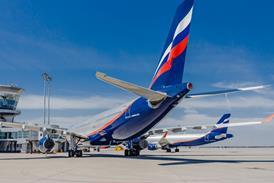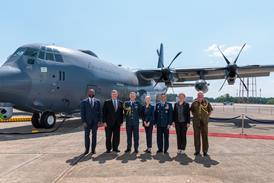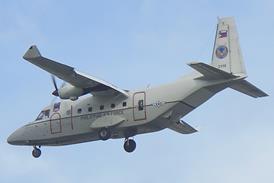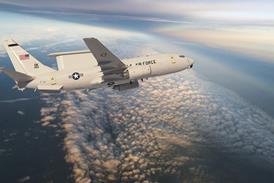Forbes Mutch/LONDON
On the face of it, business aviation in Europe is not looking healthy. Only one dedicated corporate-aircraft manufacturer survives (France's Dassault); the number of operational aircraft has fallen for the second year running (see P63); and major airport operators are closing their runways to business aircraft. Scratch the surface, however, and you find at least one leading executive of the corporate-aircraft community optimistic about the future. In fact, he has answers to many of the problems.
Brian Humphries, who took over from Francois Chavatte as chairman of the European Business Aviation Association (EBAA) in May, agrees that there are challenges, but, he says, corporate aviation "-has a very important role to play in the economy of Europe", and he is confident that it will be allowed to play that role.
He believes that solutions must begin with education. "There is a misunderstanding about the way a business aircraft is operated," he says. "The public still tends to see a business aircraft as an "admiral's barge", but, in most modern companies these days, the operation of the flight department is subject to exactly the same scrutiny as any other department, he says.
The company jet has to be economically effective, he adds, although he admits that it is difficult to measure the productivity of business aircraft in obvious terms, apart from "-the easy things, like time saved, and access to points that would otherwise be impossible to reach". What has to be remembered, he adds, is the business opportunities which corporate aircraft offer. "You go out on a visit and you meet somebody and then you don't want to stick to the schedule. You want to vary it; you want to take that person somewhere. With a business aircraft, you have the flexibility to make a deal," he points out.
Humphries, who is also managing director of Shell Aircraft in the UK, has an office which overlooks London Heathrow, ironically one of the airports imposing restrictions on business-aircraft traffic. "Access to major airports like Heathrow is important," he says, "but what would be better is multiple airports around cities - a web of airports."
Many of the major airport operators in Europe actively discourage corporate aircraft, preferring high-revenue scheduled flights to ad hoc business traffic. Humphries says, however, that airports can not fill every slot with a scheduled service, and corporate aircraft are ideal for filling "opportunity" slots which come up at short notice. Again, it means convincing the airport operators to rethink their policies.
While the situation at smaller, regional or "satellite", airports is more accommodating, they often lack the services that crew and passengers require. It is difficult for them to attract investment from corporate operators, however, when the site may have an uncertain future, which is often the case when the land is owned by a local-authority or government agency. "How can you make investment decisions if you are not guaranteed a future?" asks Humphries. "Governments have a role to play here. They need to create a stable framework in which sites are guaranteed a long-term future, and the appropriate investment drawn in," he adds
Humphries believes that re-education of the public, potential operators and politicians should begin with an advocacy campaign along the lines of the USA's "No plane, no gain", orchestrated by the National Business Aircraft Association and the General Aviation Manufacturers Association. "That campaign has bonded the manufacturers and the customers, and something similar should be up and running in Europe," he says.
For it to work in Europe, however, he says that the US manufacturers must show more understanding of the problems facing European operators. "Only the manufacturers can answer the technical questions properly. On the question of remote-area operations, for example, and the debate over new Joint Airworthiness Requirements covering extended-range operations, they have already done the technical reliability tests and systems analysis. They know the answers," Humphries says.
The EBAA enjoys a good relationship with other user organisations, such as the UK General Aviation Manufacturers and Traders Association, and Humphries says that it is important that they speak with one voice.
As EBAA chairman, Humphries sees his role as largely ambassadorial, while, at the same time, setting out policies which reflect the needs of members. His personal goals for a term of office which might last up to five years are "the corporate [EBAA]goals". He says: "At the end of five years, if we had airfields like Farnborough [in the UK] as assured business-aviation centres; if we had similar arrangements for airfields all over Europe; if we had regulations that were constructive to business aircraft; and if we had an aviation infrastructure that reflected fairly the way business aircraft operate-I would be a very happy man."
Source: Flight International




















